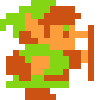The task of this post is to show that the imaginary number i is no more or no less real than the number 4. It is often that you will see people say such things as how can you have the square root of a negative number? Some even go as far as to ask how can you have negative money? This is due to a misunderstanding of what a number is.
On the first, how can you have issue with the root of a negative number? This is simply due to centuries old dogma passed traditionally from teacher to student in grade school with the idea that the positive integers are real or exist somewhere and that only they can be numbers. We are taught properties of integers and are told that only those that follow these rules are numbers. How silly. The second on negative money may be considered to be that the positive integers associations are more concrete. 5 -> cats. 1000 -> money. Numbers are no more than an abstract invention or tool we may attach to appropriate situatations which help us reason on certain things we encounter in nature.
We say 5 boxes and attach the concept of 5 to boxes which enable us to envision the multiple boxes. At 45443454 we can no longer even envision the boxes and simply have another concept, a vague notion of many boxes: 454454 -> vague concept -> many concrete objects: boxes. Attatchments are possible with negative integers as well. Consider negative boxes, we denote a lack. -4 -> concept of needing 4 boxes. We can never make our way down to the concrete object box. But the relationship with concrete objects are still obvious. As we go higher and higher we are less able to associate with concrete objects and the relationship is less visible: say with some number q which is a quaternion for example. This is not so easily associated and we have less concrete experience with such a concept and so feel it to be less natural, where infact the positive integers are just as "fake" or "real" as the the quaternions. We are used to handling integers, the path from the positive integer concept to a concrete object is quite simple, creating an illusionary concept of concreteness. The more complex our numbers the less we take them for granted and the more distrustful we are (their path to experience is too complicated), conversly for simple numbers like the positive integers we have little difficulty, in fact so little it may be considered that we cannot dissasociate positive integers from objects. This causes problems on what a number is and creates misconceptions on what a number may be and in the future resulting in us being mistrustful to treat perfectly valid numbers as numbers.
General sketch on how to construct the natural numbers
One way to construct the natural numbers due to Von Neuman is to use set theoretic formulations to define them. I go into it very informally. Consider the empty set ? (a set is an aggregration/conglomeration of a collection of objects. A pack is to set as a set's members is to wolves, a pack is a conglemeration of wolves). The empty set has no members. It is itself a an existing thing but has nothing whatsoever as its contents. Basically a collection of pure nothings. So we take the empty set and from there make a set with that as its member. We then make another set that has the empty set and the set(s) we have made as its members. We do this ad infinitum. This construction has that each stage in our constructing, the current set in question has all the previous sets as its members.
So we have ? -> {?} -> {? , {?}} -> {? ,{?}, {? , {?}}} -> ...
The Set (as an implentation of the peano axioms which tell us what it takes to be considered the natural numbers) which contains all these sets is equivalent to isomorphism to (basically the same as) the natural numbers. Yes that is:
? = 0
{?} = 1
{? , {?}} = 2
{? ,{?}, {? , {?}}} = 3
This has the interesting property that the number 52 is inside 100, the number 52 is contained in 100. In fact the number 100 contains all the numbers previous to it inside it (as members). The Natural numbers, in essence, under this method is basically made out of nothing. We just have collections of empty aggregrations. That is our natural numbers that are so real and obvious.
As a final excercise consider the Real Number Line. Try and point out the location of ? on it. We may get arbitrarily close to it, zoom in closer and closer but we will never arrive at it or equivallently, we do so at infinity. How is that "real" number any more real than the square root of -1?



Good read, I look forward to more :).